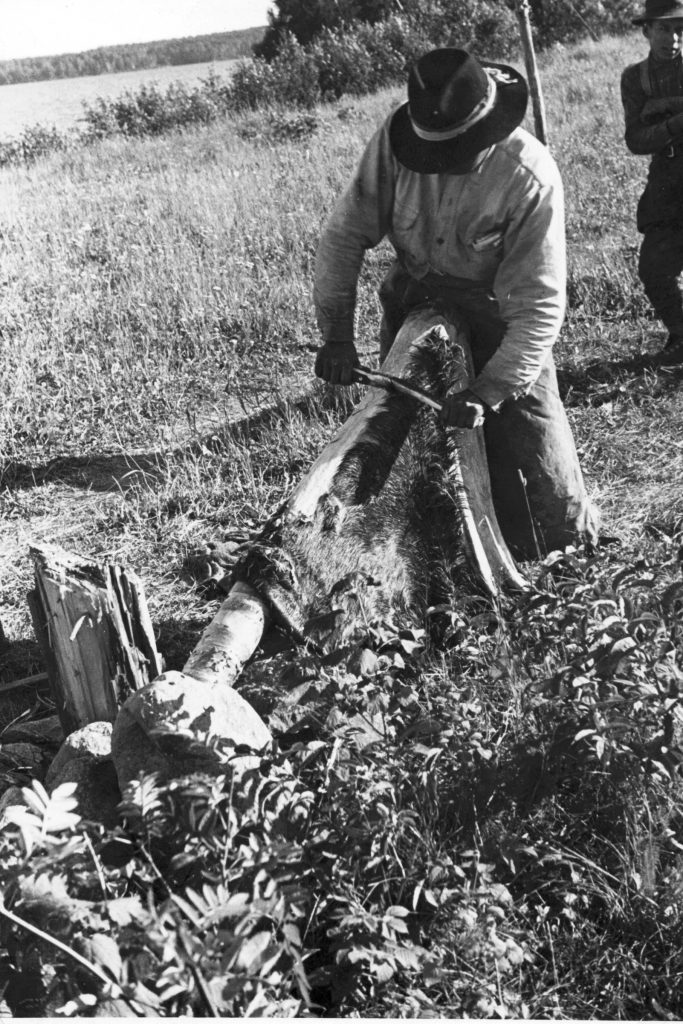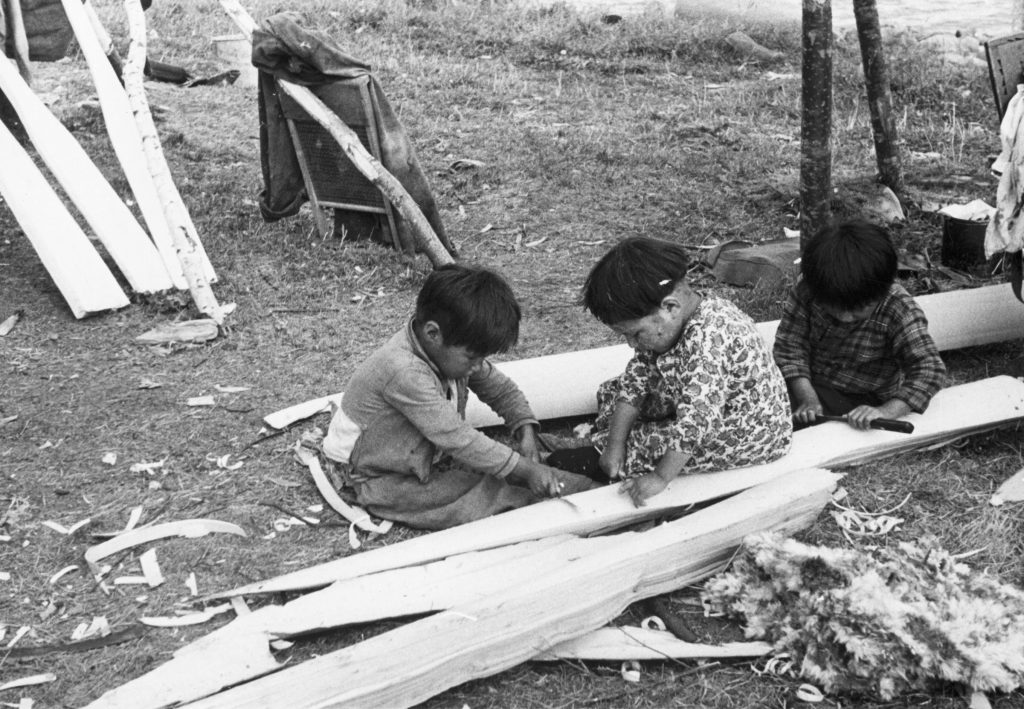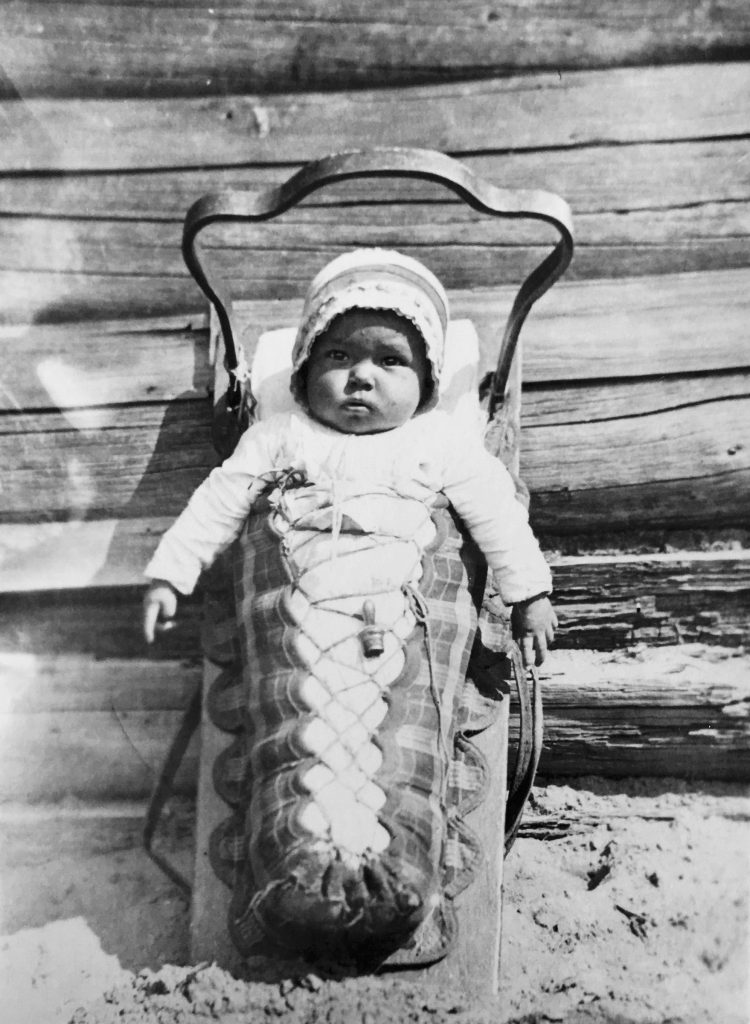Anicinabek’s ingenuity – Anicinabek o kigitahidamowina
For hundreds of years, our ancestors perfected tools and techniques to survive in the forests and develop a quality of life close to the nature on which they depended.
Marie-Jeanne P.M. says: “The heels of the moose’s feet were put under the moccasins. This made them waterproof.”
The canoe is perhaps the best-known symbol of the Anicinabek way of life. It was made of cedar planks (kicikatik), birch bark (wikwas), without nails, with spruce roots to bind the pieces together and fir gum (cikobi pigiwo) to make them waterproof. Ultralight, fast and very maneuverable, it is well suited to travel on water, whether on a quiet lake or a rough river.
The tikinagan (baby carrier) was an essential item for a young family. The base was made of white spruce or cedar (kicikatik) and the curved parts used to protect the baby in case of a fall were made from the inner bark of the ash tree (agimak wikipiyatik), as it can be shaped without losing its strength. The tikinagan was used to carry a baby on its back until it was about two years old. It can also be placed on the ground while protecting the baby. The bar on the front protects the child’s head if the tikinagan tips over. It could also turn over and float if it fell in the water. Many people still use it today.
Sphagnum moss is a very absorbent wood moss. Once dried, it was used to form babies’ diapers and was used by women when they were menstruating (some furs were also used for this).
The bones of hunted animals are useful for different activities: the tibia of deer is an excellent tool for scraping hides, much more suitable than its metal or wooden equivalent; the penis bone of the marten is shaped like a needle.
Our ingenuity has allowed us to adapt to the changing environment. We no longer live like our ancestors, but we are still here. Proud of our roots, we have talents and dreams.
Let’s create that future together!




